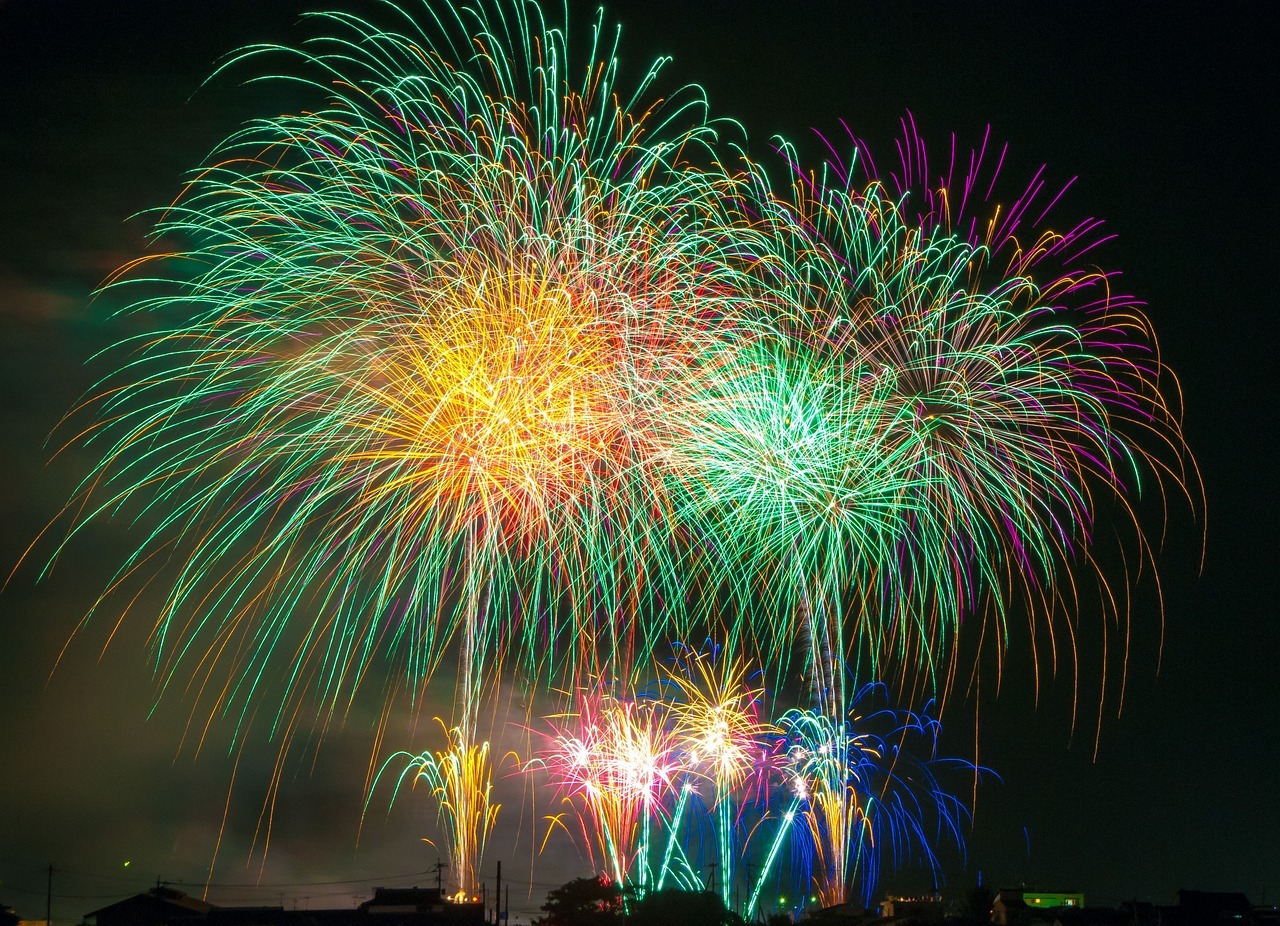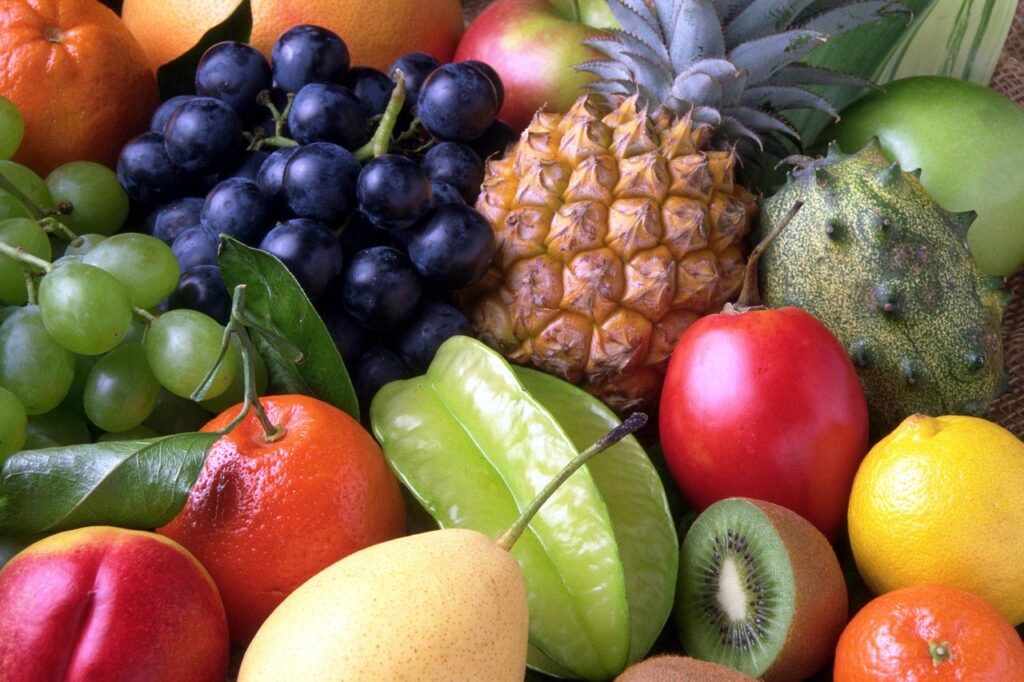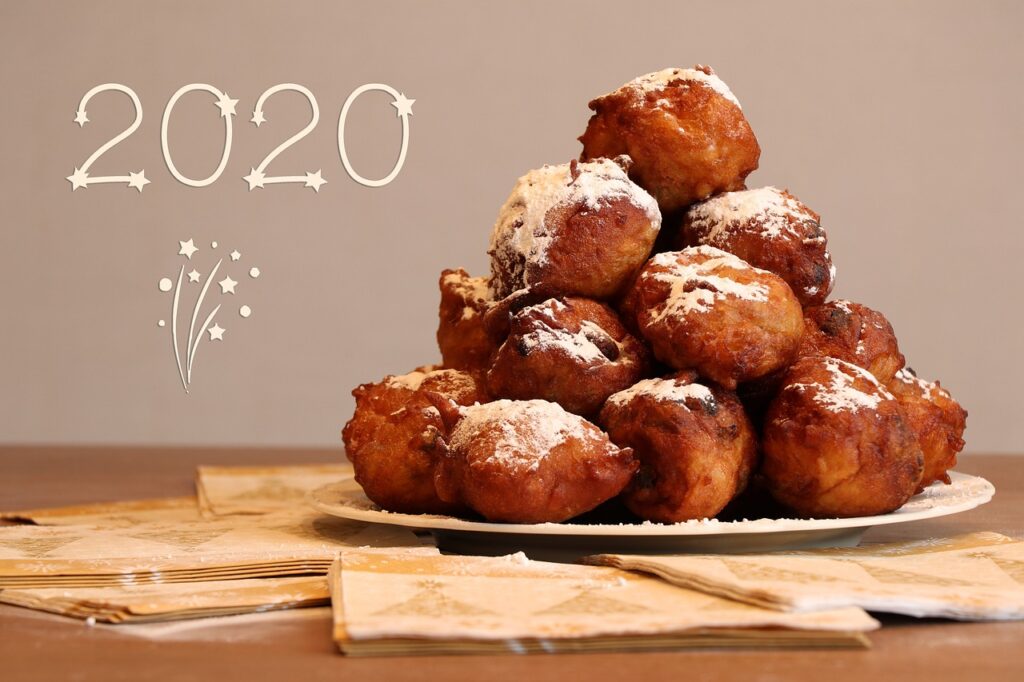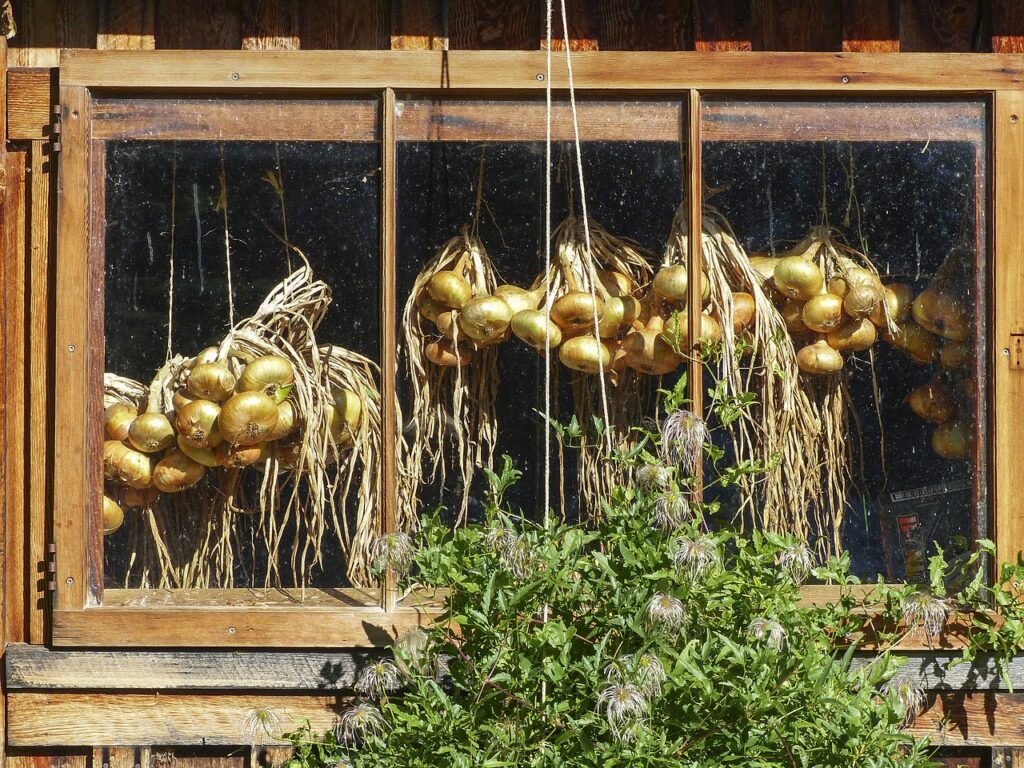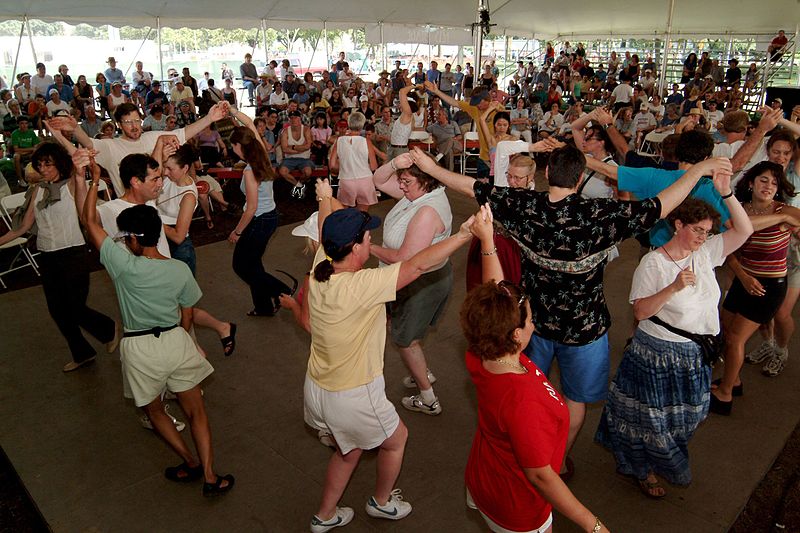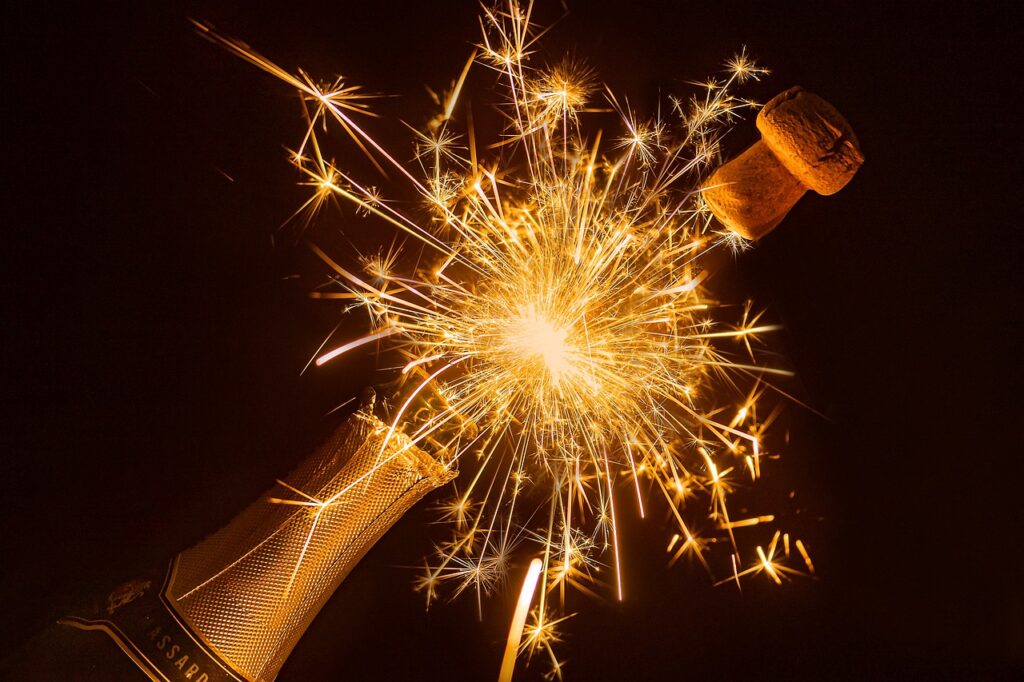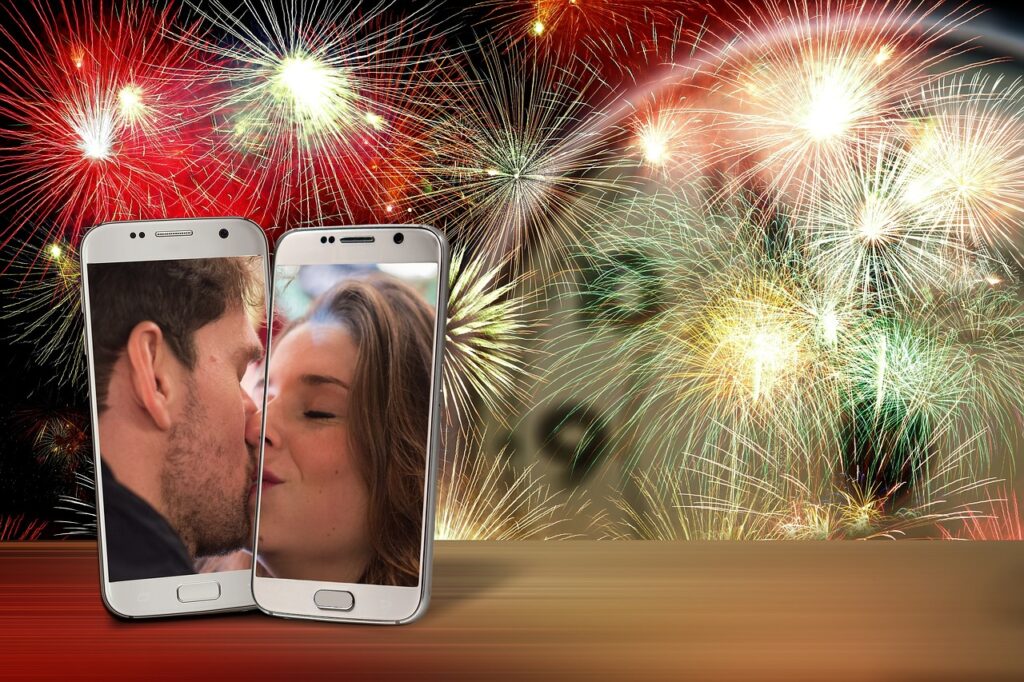Introduction
The beginning of a new year signifies a time of transition for many people. It’s a chance to consider the past and what the future might hold. The hope is that better days are coming, regardless of whether this year was the best of our lives or one we’d rather forget. Cultures worldwide have observed the beginning of each new year with festivities for at least four millennia. Today, the majority of New Year’s festivities begin on December 31, also known as New Year’s Eve, and go into the early hours of January 1, also known as New Year’s Day. Traditional new celebrations include attending new year parties, enjoyinh in special New Year’s meals with friends and love ones, making resolutions for the following year, and watching fireworks displays.
The festive holiday is now equated with cheerful celebrations, including parties, fireworks, Champagne, and other merriment. And to usher in the new chapter, people have developed a few customs and traditions over the years. Traditions have a significant role in our culture. They provide us with a sense of community and give our lives purpose. Few holidays are as significant as the beginning of a new year, so New Year’s traditions are particularly significant.
The customs surrounding the New Year depend specifically on the origin of the tradition, as well as on foods, celebrations, and particular items. Every one of these traditional festivals, including eating meals together as a family or gathering with friends for water fights, is derived from their manners and customs. We don’t all celebrate New Year’s Eve similarly, even though most of the world does so festively on December 31. Here’s a look at how New Year is celebrated in different parts of the world.
Different New Year Traditions Around the Globe
Every culture in the globe has its own distinctive New Year’s traditions to celebrate the calendar change. Traditions are an essential component of human existence. These ancient customs served as the cornerstone of civilized cultures. They influenced the rules that govern our way of life today. Many New Year’s customs we take for granted have a long history. Discover various ways to commemorate the beginning of the year, from singing “Auld Lang Syne” to eating black-eyed peas for luck.
1. Lunar New Year in China
The Lunar New Year, also known as the Spring Festival, lasts for 15 days and is celebrated by billions of people in China and those from other Asian nations like Indonesia and Vietnam. Because the first day of the new year signifies the end of the coldest part of winter and the beginning of the spring months, it is given the name “Spring Festival.” According to the traditional lunisolar Chinese calendar, it is observed at the beginning of the solar year, which also shows the moon phase. Each year, the Lunar New Year falls on a different day. According to the Chinese lunar calendar, the first day of the new year always falls on the new moon between January 21 and February 20. Twelve zodiacal animals are used to name each new year. The Lantern Festival, observed on the fifteenth day of the first calendar month and serves as the festival’s culmination, is traditionally held on the eve of the first day of the Lunar New Year.
Other Chinese New Year Symbols and Traditions
The origins of Chinese New Year celebrations lie in myth and dread. According to legend, the ferocious beast Nian would attack and devour villages each year as it ended. The Chinese New Year celebrations began after the beast was scared away using loud noises and flashing lights. In modern China, the 15-day New Year celebrations are now followed by a week of vacation. Like the Western New Year, the main party occurs the night before the event. Fireworks displays let off across the city at the beginning of the new year. Other significant days of the 15-day Chinese New Year Festival, outside New Year’s Eve, include:
a. JIE CAI CENG: Celebrating the Gods of Wealth and Prosperity
The prosperity gods are said to descend from the heavens on the fifth day of the new year. Businesses frequently take part in lighting firecrackers because they think doing so will bring them luck and prosperity for their enterprise.
b. Yuan Xiao Jie: Lantern Festival
The Chinese New Year celebrations end on the 15th day of the New Year, also known as the Festival of Lanterns. All different kinds of lanterns are lighted up in the streets, and poetry and riddles are frequently created for amusement. The animal of the year or a rabbit-shaped paper lantern on wheels are also available. A Chinese story or folktale about a female goddess named Chang E who leapt onto the moon is the source of the rabbit lantern. She brought a rabbit to keep her company so she wouldn’t travel alone. According to legend, on this day, you can see the goddess Chang E and her rabbit on the moon if your heart is pure enough.
c. The Red Envelopes
The red money envelopes, known as “hong bao” in Mandarin, are traditionally only handed to children or single, unmarried adults without jobs. You must still give the younger people the hong bao money even if you are single, employed, and financially well. In Chinese culture, red symbolizes prosperity, happiness, and abundance and is frequently worn or used as décor during various festivals.
d. Dragon
The dragon can be seen in many Chinese cultural festivities since the Chinese people frequently believe they descended from the dragon. Dancing dragons will also perform in front of the office building on the fifth day of the New Year when many people must start returning to work. There may be numerous dancing dragon performances on the 15th day of the New Year. Prosperity, luck, and fortune are all represented by the dragon.
e. Traditional Meals
The most significant dinner of the year is on Chinese New Year’s Eve. Typically, families have dinner together at a specific relative’s home. Still, nowadays, many families frequently spend New Year’s Eve dinner at a restaurant. The dishes served include—Eight Treasures Rice, which includes rice, walnuts, various coloured dry fruit, raisins, delicious red bean paste, jujube dates, and almonds—which are always present on the dinner table. “Tang Yuan”, a won-ton soup or a black sesame rice ball soup, and dishes including chicken, duck, fish, and hog are also served. Another essential meal that should not be absent from the dinner table is “Song Gao,” which means “loose cake,” a little, sweet round cake that is produced with rice that has been coarsely pounded. Another New Year staple meal is “Jiu Niang Tang”, a rice and sweet wine soup with tiny rice balls.
2. Israel’s Rosh Hashanah
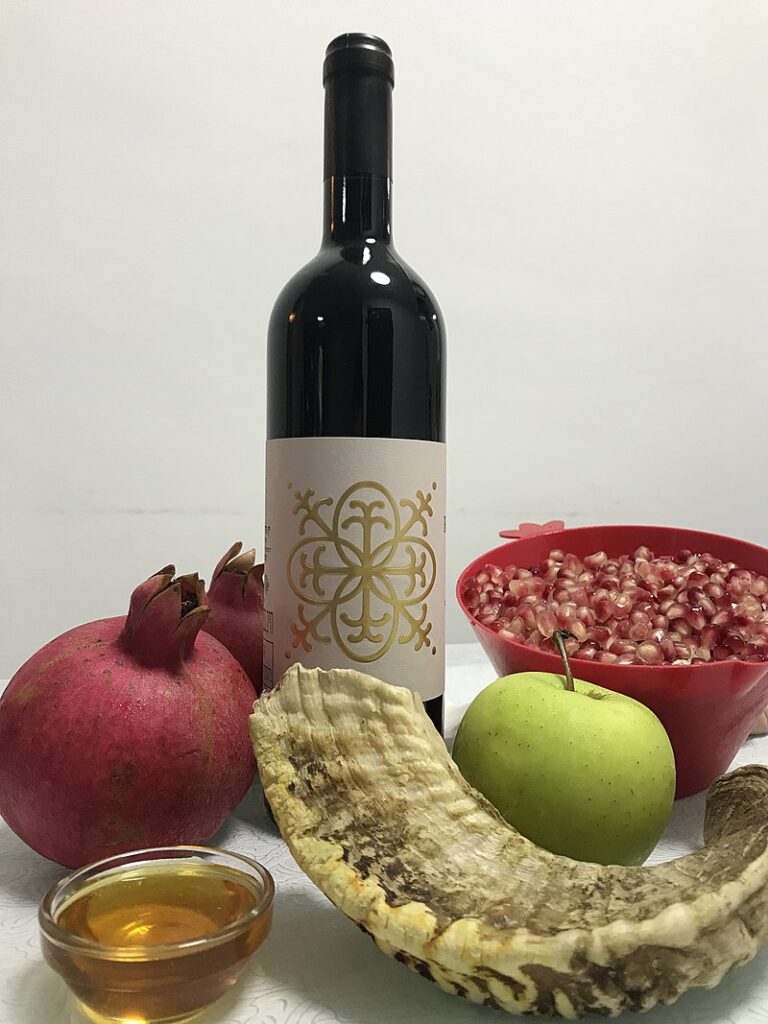
Rosh Hashanah is one of the most significant and memorable periods of the year in Israel. Rosh Hashanah, the name of the Jewish New Year, usually occurs in late September or early October. A two-day celebration called Rosh Hashanah marks the beginning of the Jewish calendar’s new year. Being in Israel during Rosh Hashanah is like being on Shabbat when most businesses are closed in many aspects. Since Rosh Hashanah is based on the Hebrew Calendar, which starts on the first day of the seventh month, the precise date changes yearly. Almost often, Rosh Hashanah falls in September or October.
a. Historical Significance of Rosh Hashanah
Different names for Rosh Hashanah can be found in the Bible. It is described in the Torah as a holy event that begins on the first day of the seventh month of the Jewish calendar, which is about when Rosh Hashanah falls. The term “Rosh Hashanah” first appears in the Mishna, a Jewish rule of law compiled in 200 A.D., even though the holiday was probably well established by the sixth century B.C.
Nisan is the first month on the Hebrew calendar, while Rosh Hashanah falls at the beginning of Tishrei when God is believed to have started the world. Because of this, Rosh Hashanah is viewed as the world’s birthday rather than New Year’s in the secular sense. In addition to Rosh Hashanah, the Mishna mentioned three additional “new years” in the Jewish calendar. The Nisan 1 signifies the length of kings’ reigns. The Elul 1 was established as the tithing of animals for charity or sacrifice and corresponded to the beginning of the current fiscal year. While the Shevat 15, now observed as the minor festival of Tu B’Shevat, is known as the age of fruit-bearing trees.
Following Jewish belief, God decides whether each creation will survive or pass away in the upcoming year during the 10 Days of Awe between Rosh Hashanah and Yom Kippur. According to Jewish scripture, on Rosh Hashanah, God writes the names of the righteous in the “book of life” and executes the wicked; those who fall between the two categories have until Yom Kippur to do “teshuvah,” or repentance. Since Rosh Hashanah and the days leading up to it are a time for prayer, good actions, reflection on the past, and making apologies to others, observant Jews use these days as a time for these things.
b. How to Celebrate Rosh Hashanah
Rosh Hashanah is a sombre and reflective festival, in contrast to contemporary New Year’s celebrations and boisterous gatherings. Since work is forbidden, devout Jews spend most of their holiday at synagogue. Rabbis and their congregations read from a unique prayer book known as the machzor for Rosh Hashanah and Yom Kippur because the High Holy Day prayer services include distinctive liturgical texts, melodies, and customs.
Rosh Hashanah and Yom Kippur include the vital and symbolic blowing of the shofar, a trumpet crafted from a ram’s horn. Jewish people are called to repentance and are reminded that God is their king by the ancient instrument’s sound. On Rosh Hashanah, the shofar blower must make four sets of notes: tekiah, a lengthy blow; shevarim, three brief blows; teruah, nine staccato blows; and tekiah gedolah, an exceptionally long blow.
Many Jews come home after religious services are finished for a joyous lunch rich in symbolism and tradition. In honour of Rosh Hashanah, people dress in new or unique clothes and dress up their tables with fancy linens and place settings. The feast, which includes delicacies that symbolize good intentions for the new year, usually starts with the traditional lighting of two candles.
c. Traditions and Symbols of Rosh Hashanah
- Honey and apples – Apple slices dipped in honey are one of the most well-known Rosh Hashanah practices, sometimes done after performing a specific prayer. Honey represents the hope for a sweet new year, while ancient Jews thought apples had healing abilities. For the same reason, various sweet delicacies are typically served at Rosh Hashanah dinners.
- Round Challah – Jews consume the classic braided bread on the Jewish Sabbath and other holidays. To represent either the cyclical nature of life or the crown of God, the challah is frequently cooked in a circular shape on the Jewish New Year. For a pleasant new year, raisins can occasionally be added to the dough.
- Tashlich – Some Jews engage in a tradition known as tashlich, or “casting off,” on Rosh Hashanah, in which they throw pieces of bread into a moving body of water while saying prayers. Those who follow this ceremony are spiritually purified and rejuvenated as the bread, which represents the previous year’s sins, is washed away.
- L’shana tovah – The Rosh Hashanah greetings “L’shanah tovah tikatev v’taihatem”, which means “May you be inscribed and sealed for a good year” is shortened to “L’shana tovah,” which means “for a good year.”
3. The Persian New Year – Nowruz
The national New Year holiday known as Nowruz is observed throughout Central Asia, including Iran, Afghanistan, and the Kurdish regions of Iraq, Turkey, and Syria. One of the oldest New Year celebrations, Nowruz dates back at least 3,000 years. The celebration’s festivities represent rebirth and the bond between people and nature, which takes place during the spring. While the two-week festivities are focused on visiting family, going on picnics, travelling, and indulging in local cuisine, Nowruz, which is Farsi meaning “New Day,” is deep with historical tales and fiction as well as customs and symbolism.
Zoroastrianism, a religion prevalent in ancient Persia before Christianity and Islam, is the foundation of the celebration. The return of spring, which symbolizes the victory of good over evil and joy over grief, has significant spiritual significance, according to the United Nations Organization for Culture (UNESCO). According to Zoroastrian custom, celebrations were held at noon on Nowruz to welcome the Spirit of Noon, also known as Rapithwina, who was said to be driven underground by the Spirit of Winter during the cold months.
a. The Celebration of Nowruz
Street singers known as Haji Firooz, who perform while carrying a tambourine and sporting vibrant attire, welcome the arrival of Nowruz. Using shoe polish or a soot-and-fat concoction, the performers darken their features. Charcoal was frequently utilized in the past. They depict a fictitious figure from Iranian folklore whose ancestry is unclear. The ceremony of Chaharshanbeh Soori, the symbolic burning of all that was bad from the previous year while looking forward to a fresh beginning, takes place on the final Tuesday night before Nowruz.
The phrase “Give me your red colour, take my yellow colour” is chanted while jumping over bonfires in the streets to represent how the fire burns away the yellow of illness and returns the red of health and warmth. Additionally, there is qashoq zani, which involves kids pounding spoons on pots and knocking on neighbours’ doors to ask for candy. Families congregate at the house of their oldest relative on the first day of Nowruz. The typical New Year’s meal consists of kuku sabzi, a vegetable frittata, ash reshteh, a thick green soup with noodles, chickpeas, and beans, and sabzi polo mahi, which is rice mixed with herbs and eaten with white fish. Pastries include ajeel, dried berries and raisins, baghlava, toot or mulberry, naan-nokhodchi or chickpea biscuits with pistachio, etc.
Sizdeh Bedar, which can be translated as either “getting rid of 13,” a symbol of bad luck, or “to hit the road,” marks the conclusion of the festivities 13 days after the New Year. On Sizdeh Bedar, people picnic in parks, open fields, plains, and plains while bringing the carefully grown sabzeh. They throw the sabzeh into the nearby river or fields to represent returning to nature.
b. Traditions and Symbols of Nowruz
This ancient ritual has evolved and grown throughout the years. As the celebrations extended over established trade lines and among an estimated 300 million people, they gradually absorbed more social, religious, and cultural influences. The main idea is the same, a celebration of spring and a time for rebirth and regeneration. While exact traditions vary from place to country as different cultures add their features, the core principle is the same.
- Surikh Guli – the Guli Surkh, or Red Flower Festival, is the primary event in Afghanistan. It takes place in the northern city of Mazar-i-Sharif, where buzkashi competitions—the country’s version of polo—are played over the first 40 days of the year. A ball is substituted for a goat corpse. Outdoor celebrations highlight nomadic customs and games like archery, wrestling, and horse racing,
- Sumalak– Sumalak, a thick pudding made from wheatgrass, is prepared continuously throughout the Central Asian nations. At the same time, women sing folk songs and stir enormous pots while doing so.
- Khaneh takani and Sabzeh – Weeks before the arrival of spring, Nowruz celebrations in Iran are prepared for, including house cleaning or khaneh takani. Families also cultivate sabzeh, which includes wheat, barley, mung beans, and lentils.
- The Haft-Seen table – A fun pastime for families is the Haft-Seen table, often known as the table with seven items that begin with the letter S. The seven S objects are often placed on the table after a memorable family cloth has been laid out. These may consist of:
a. smirked or vinegar – a symbol of ageing and the patience that comes with it.
b. Sikkeh or coin – for abundance and success
c. Seer or Garlic’s soothsayer – for health
d. seeb or apples- for health and all-natural beauty
e. sabzeh or wheat – for rebirth, rejuvenation, and good fortune
f. Samanu or wheat pudding – A decadent treat to symbolize prosperity procreation, and the pleasure of life
g. Sumac or berries – to celebrate the dawn and a new day.
Other elements in the Haft-seen spread include a mirror representing reflection; coloured eggs, which stand for fertility; and goldfish in a dish, which stand for life.The Quran, or a work by the Persian poet Hafez (1315–1390), are also typically included. They demonstrate Nowruz’s ability to meld its ancient traditions with more contemporary religious and cultural customs.
4. India’s Pahela Baishakh, or Bengali New Year
The first day of Baishakh, the first month in the Bengali calendar, which falls in April, is when Bengalis celebrate Pahela Baishakh, the start of the harvest season. While the Sikhs celebrate with singing, dancing, and readings from their holy book, the Bengalis celebrate with cultural events and feast days. “Shubho Noboborsho,” or “Happy New Year,” is the customary salutation during the Bengali New Year. The first and new months of the Bengali calendar are denoted by the words Pohela and Boishakh, respectively, in Bengali.
This event and the Bengali New Year are synonymous. The celebration, whose origins can be traced to the lunisolar Bengali calendar, always takes place on April 14 or 15. This day is celebrated by people of Bengali heritage in West Bengal, Assam, Tripura, and Bangladesh by hosting community fairs, performing traditional Jatra performances, and cooking unique and festive foods.
a. The Significance of Pohela Boishakh’s
Pohela Boishakh is celebrated with great jubilation and vigour by Bengalis all over India. Most people take this day as an opportunity to visit with family, shop for new clothes and accessories, and indulge in Pohela Baisakh festive dinners, to name a few. Bengalis even have modest parades, and processions called the Prabhat Pheri in several regions of the world that start early in the morning. People participate in these processions dressed in traditional attire or on floats, and dance groups are invited to perform songs and melodies by Rabindra Nath Tagore.
‘Shubho Nobo Borsho’ is a common greeting people use to start the day on Pohela Boishaakh. ‘Shubho’ means ‘happy,’ ‘Nobo’ means ‘new,’ and ‘Barsho’ means ‘year. Everybody goes to give prayers as part of their custom on this day, filling temples like Dakshineswar and Belur with worshipers. On this auspicious day, people particularly adore Goddess Lakshmi and Lord Ganesha. Pohela Boishakh is a state-wide holiday in Tripura and West Bengal.
b. The Celebration and Traditions
People dress in new attire and greet friends and acquaintances by exchanging sweets and pleasantries. Younger people touch elders’ feet as they ask for their blessings in the upcoming year. Another tradition is to wear gem-encrusted rings to please the planets and stars. Family members exchange greeting cards and gifts with one another. These presents frequently have a local theme and are handmade.
Hindus in Bengal commemorate the end of the year, or “Chaitra Sankranti,” with several fun fairs and festivals, like Gajan and Charak. It culminates in Latu Babu-Chhatu Babur Bazar in North Kolkata on the last day of the year and a day later at Konnagar, the site of Bengal’s sole “Basi Charaker Mela,” which is a traditional Charak Mela that features some intense spiritual gymnastics.
Poila Baisakh is Haal Khata time for Bengali business owners and traders; it’s a lucky day to ‘open’ the ledger. Nearly all stores and commercial areas do a formal Ganesh and Lakshmi Puja, and frequent customers are formally invited to the nighttime celebration. Consumers might only sometimes look forward to it, as Haal Khata also signifies the payment of all outstanding bills from the previous year.
Freshly made Bengali cuisine, delightful dishes fills household kitchens with an enticing perfume. It is auspicious to begin the year with mishtanna or traditional sweets like Rosogollas, Payesh, Sandesh, Kalakand, and Ras Malai. Of course, there are many different fish and rice preparations on the New Year’s menu for lunch—people who love to eat out benefit from a choice of palate-pleasing treats.
5. India’s Diwali or The Festival of Lights
The most significant celebration of the year in India is Diwali, commemorating the victory of light over darkness, wisdom over ignorance, and goodness over evil. The five days of Diwali are celebrated by more than a billion people of different faiths throughout India and its diaspora, and they include prayer, feasts, fireworks, family get-togethers, and philanthropic giving. Some people consider Diwali to mark the start of a new year. However, Diwali is most well-known for being a festival of lights. Diwali, which translates to “row of lights,” is named after the brightly glowing clay lamps that revellers line up outside their homes. The Hindu lunar calendar determines This festival’s dates, which assigns a month to the length of the moon’s orbit around the Earth. Between the Hindu months of Asvina and Kartika, which usually fall in October or November on the Gregorian calendar, is when Diwali begins.
a. The Story Behind Diwali
Hinduism alone is considered the world’s oldest living religion, dating back to the second millennium B.C. Different geographical regions have different interpretations of the Diwali story. These, however, are all epic stories of men who, according to Hindu belief, were manifestations of the god Vishnu, regarded as the universe’s sustainer and whose job is to restore the balance between good and evil under challenging times. In northern India, Diwali celebrates Prince Rama’s triumphant return to the city of Ayodhya following a dramatic rescue of his wife Sita, a manifestation of the goddess Lakshmi who had been abducted by the rival king Ravana, who had been exiled for 14 years due to the machinations of his evil stepmother.
In contrast, Diwali celebrates Lord Krishna’s victory over the demon king Narakasura in South India. Narakasura had imprisoned 16,000 ladies in his palace and harshly punished any citizens who tried to rebel against him. And in western India, the festival honours Vishnu’s consignment of King Bali to the underworld after his enormous might made him a menace to the gods. Three minority religions in India, the Sikhs, Jains, and Buddhists, each have unique Diwali tales. For Sikhs, whose religion developed in the late 15th century as a branch of Hinduism that is mainly devoted to Vishnu, Diwali marks the guru Hargobind’s liberation from the Mughal ruler Jahangir’s 12-year imprisonment in the 17th century.
Jains, whose prehistoric religion originated in the first century B.C., mark Diwali as the day that Lord Mahavira, the final of the great Jain teachers, attained nirvana and also shares many of the beliefs of Hinduism. And Buddhists, whose religion first appeared in the latter half of the sixth century B.C. Celebrate it as the day that the Hindu Emperor Ashoka, who ruled in the third century B.C., converted to Buddhism in what some have described as a reaction to Hinduism.
b. How Diwali is Celebrated
Diwali customs vary from place to region, just like the holiday’s legends do. But they all share an abundance of sweets, family get-togethers, and the lighting of clay lamps, which stand for the inner light that guards each home against spiritual darkness. However, each of the five Diwali days has a unique meaning.
Day 1: People pray to the goddess Lakshmi, bake sweets, and clean their homes.
Day 2: People decorate their homes with lamps and rangolis, which are patterns
constructed on the floor out of coloured sand, powder, rice, or flower petals.
Day 3: The third day of Diwali is the most significant; individuals may visit a temple
to revere Lakshmi on this day or assemble with friends and family for
celebrations and fireworks. The lamps the devotees had shown the day
before were set on fire.
Day 4: The fourth day of Diwali is often considered the new year and a time for
greetings and gift-giving.
Day 5: The fifth day is usually used for honouring one’s siblings.
Diwali has grown to be the biggest celebration in India over the years, rivalling Christmas or Thanksgiving in the US. Consumers profit from the sales, and mini-fairs are held in villages all around India and its diaspora. Fireworks are also a significant part of the festivities, especially in New Delhi, where they are sometimes blamed for rises in the city’s infamously terrible pollution. To lessen these negative consequences, the city has recently outlawed firecrackers. Regardless of how Diwali is observed worldwide, everyone is convinced that light will ultimately prevail over darkness.
Most Common New Traditions
People from different parts of the world celebrate New Year’s Eve differently, even though most of the world does so festively on December 31. Fireworks and sharing a kiss at the stroke of midnight are traditional year-end rituals in the United States. Still, in other countries, New Year’s traditions are as varied as the countries that celebrate the holiday. Their country of origin’s particular artefacts, foods, and festivals are incorporated into their New Year’s traditions, which are distinctive to that nation. There are several traditions unique to each place, but they are also adapted and practised in other countries.
1. Eating Lucky Foods
Everywhere in the world, New Year’s Eve is observed with a dinner shared with loved ones. In certain places, this entails consuming particular “lucky” foods. For instance, it’s 12 grapes or raisins in Spain, Portugal, and parts of Latin America and 12 spoonfuls of lentils in Italy—one with each of the 12 clock chimes at midnight. Pancakes are served as the traditional New Year’s breakfast in France. In the Netherlands, people eat doughnuts and delicacies in the shape of rings. At the same time, Germans prefer marzipan shaped like a pig for good luck. Meanwhile, in the Philippines, people eat 12 kinds of circle shape fruits.
2. Wearing White Clothing (Brazil)
In Brazil, the beginning of the year is viewed as a time to consider the previous year and establish fresh resolutions for the year to come. Because white is associated with luck, prosperity and is thought to fend off evil spirits, everyone wears it. The celebration involves gathering on the beaches dressed in white, jumping seven waves—considered lucky in Brazilian culture—for good fortune, and tossing flowers into the water as a sacrifice to Lemanjá, the sea goddess.
3. Scotland: The First Visitor of the New Year
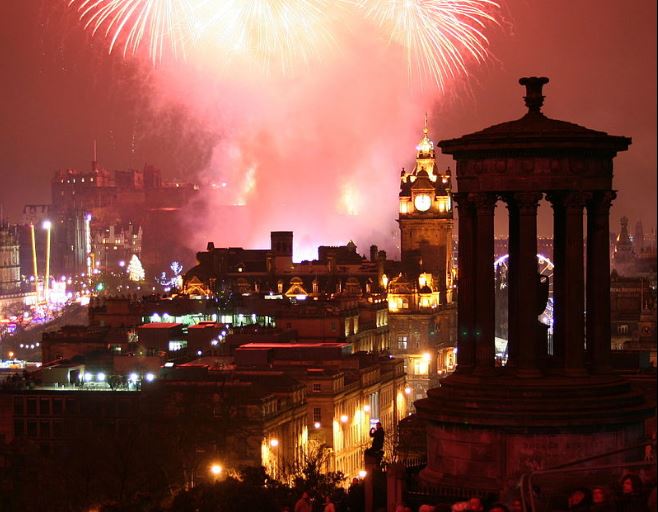
The day before January 1 is so significant in Scotland that it is given the moniker Hogmanay. First footing is one of the most well-known customs observed by the Scots on this day. Scottish folklore holds that if you want good luck in the upcoming year, the first person to enter your home after midnight on New Year’s Day should be a dark-haired male. These men typically arrive with presents of coal, salt, shortbread, and whiskey, all of which heighten the sense of riches. This belief can be traced back to the Viking invasion of Scotland, wherein, during that time, the last thing a Scot wanted to see on their doorstep door was a light-haired man carrying a giant axe. Today, the opposite—a dark-haired man—stands for wealth and success.
4. Carry a suitcase that is empty when in Colombia
Many Colombians participate in several customs to bring luck for the New Year, such as eating 12 grapes while making a wish for each one consumed. Some Colombians douse themselves in Champagne to ensure prosperity in the following year. At midnight, partygoers carry empty luggage, hoping to bring about a year filled with travel. They also carry cash to entice stability and financial security in the upcoming year. Many people add lentils to their rice or keep them in their pockets because they think they will bring them luck and prosperity.
5. Danish company Smashing Plates

Smashing plates and used dishes is one of Denmark’s most well-known New Year’s customs. To ward off evil spirits, Danish people save their old dishes and lovingly smash them against the doors of their loved ones. Another custom is to “leap” into the new year by jumping off chairs at midnight. Another is to eat Kransekage, a cake in the shape of a wreath made of marzipan rings placed on top of one another with a bottle of wine in the middle. Flags and decorations are placed on the cake. By the end of New Year’s Eve, Danes take pride in how many broken dishes are outside their door. On New Year’s Eve, it’s customary in Denmark to throw china at your friends’ and neighbours’ front doors. Some believe this tradition helps Danish people put any hostility and bad feelings behind them before the New Year. It’s also believed that the larger your collection of broken dishes, the luckier you’ll be in the coming year.
6. The Netherlands: Eating Oliebollen
To put it mildly, this Dutch custom on New Year’s Eve has an unusual justification. When the Germanic goddess Perchta, also known as Perchta the Belly Slitter, tried to cut open their stomachs and fill them with trash (a punishment for those who hadn’t sufficiently participated in yuletide cheer), the fat from the deep-fried dough would cause her sword to slide off, saving the lives of the ancient Germanic tribes. Oliebollen are now eaten on New Year’s Eve, and it isn’t easy to find a Dutch food vendor who isn’t selling these doughnut-like balls during the winter.
7. Japan’s Oshogatsu
The Japanese New Year, or Oshogatsu, is one of the most significant holidays in Japan. Like other New Year’s celebrations, it serves as a time to wish troubles from the previous year goodbye through various rituals and festivities. The “year-forgetting parties” known as Bonekai occur in December. Buddhist temples ring their gongs 108 times on December 31 to symbolize the 108 temptations one must conquer on earth to reach nirvana and wash away the wrong actions and bad luck of the previous year. On New Year’s Day, people frequently take the day off work, dress in traditional kimonos, and eat soba noodles, symbolising longevity. Otoshidama, which are tiny gifts containing money, are given to kids. Sending letters to friends and relatives specifically designated to be delivered on January 1 is another traditional Japanese habit.
8. Hanging Onion and Smashing Pomegranates
On the other hand, Greeks hang the pungent vegetable on their doors to encourage growth during the new year since they view onions as a symbol of rebirth. Given that the odorous onion’s only apparent desire is to establish roots and continue to grow, Greek culture has long connected this meal with the development concept. Podariko, which means “good foot,” is a Greek tradition that tries to bring luck at the beginning of the year. Pomegranates, regarded to be a sign of success, prosperity, and fertility, are hung from doors by houses before the occasion. To send a lucky person to be the first to reenter the house with their right foot first on New Year’s Eve before midnight, everyone will turn off the lights and depart the house before that time. If done correctly, it provides the family prosperity for the entire year. The second person will then smash the pomegranate against the door to see how much luck it will bring—the juicier seeds that run out, the more luck the new year will bring.
9. New York’s Ball Drop
The dropping of the ball has come to symbolize New Year’s Eve celebrations worldwide. This is especially evident during the Times Square festival in New York. Despite the invention’s seeming modernity, the original version of the roughly 12,000-pound ball was developed in the nineteenth century. Early in the eighteen hundreds is when time balls first appeared to signal time.
In 1818, Captain Robert Wauchope of the Royal Navy thought it would be a good idea to produce a visual signal that captains could view from their decks from a coastal naval observatory. They could maintain track of time with the help of this signal. The custom of dropping a lit ball to indicate the precise hour was first established by England’s Royal Observatory in 1833. The moment the ball started to shine, the captains compared their timepieces to the official time. Every afternoon, the ball dropped at one, allowing the captains of the adjacent ships to set their instrumentation accurately. There were a dozen time balls set up all over the world by 1845.
Even though the inaugural Times Square New Year’s Celebration occurred in 1904, the first New Year’s Eve ball drop in the area did not occur until 1907. The Time Square ball drop on New Year’s Eve has become a tradition since the event’s debut in 1907. 1913 The Times moved, but the Times Square ball drop persisted. Due to the difficulties caused by World War II, 1942 and 1943 were the only years where it did not decrease. Today, a Colorado atomic clock with laser cooling triggers the decrease. The Times Square ball drop is a well-known custom, and new patented inventions have emerged to alter and enhance this custom.
10. Burning Effigies
Another New Year’s custom used in many nations, including Ecuador, is the burning of effigies. All kinds of figures, including politicians and celebrities, are made into effigies. They are set on fire at midnight on New Year’s Eve. Many people think that the custom started in 1895, during the height of the yellow fever epidemic in the area. They packed the deceased’s garments into the coffins before setting them on fire, partly to burn the illness away. The cleansing icon persisted. Burning effigies to purge negative karma from the previous year before the new one begins with a fresh start became a practice.
New Year Traditions Shared by Most Countries
There are also New Year’s customs that are observed by individuals all around the world. The New Year is one of the most celebrated festivals on the planet, in part because of these shared traditions. Here are a few examples of the numerous traditions that cut across time zones, nations, and cultural boundaries.
1. Impressive fireworks shows
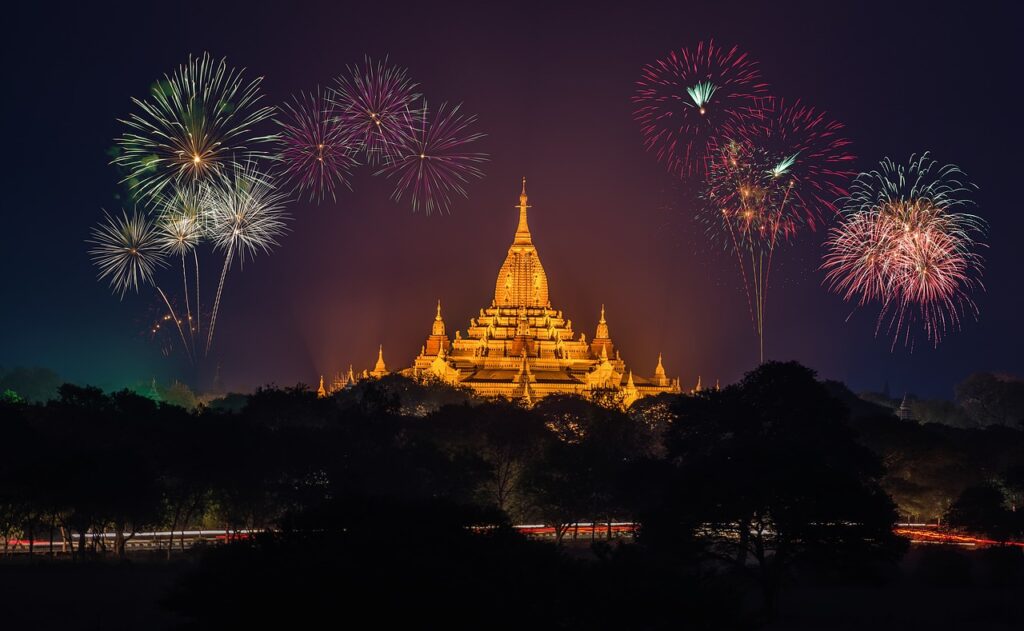
Large fireworks displays are one of the most common methods to ring in the new year. These occur throughout the world as various nations reach midnight. This custom is prevalent throughout many New Year’s festivities and cultures. This custom stems from the antiquated notion that making noise on New Year’s Eve can fend off evil spirits and bad luck. Fireworks show and firecrackers most likely reflect the same. This custom is still practised today by playing with loud objects. As the clock strikes midnight 24 times worldwide, children may fling poppers to the ground in neighbourhoods and towns put on impressive fireworks displays.
2. Singing the New Year’s Song “Auld Lang Syne”
It is customary throughout the English-speaking globe and beyond to sing “Auld Lang Syne” at midnight. A well-known poet, Robert Burns, transcribed the traditional Scottish folk song in 1783. After that, it became a customary celebration song—for weddings, graduations, funerals, etc.—all over Scotland. The precise translation of Auld Land Syne is “old long since”, which literally means “days gone by.” Since then, “Auld Lang Syne” has grown to be the most well-known New Year’s song in the entire world.
Guy Lombardo and the Royal Canadians, a Canadian band, helped popularize the custom of singing it at the stroke of midnight on New Year’s Eve. The band, which originated in an area of Ontario established by Scots, frequently covered the song to draw attention to Robert Burns Cigars, one of their radio show’s advertisers. Auld Lang Syne remained the show’s last song for nearly 50 years, the rest of Lombardo’s life, after the band had the opportunity to perform it at a New Year’s Eve performance in 1928.
3. Resolution for the New Year
Since the prehistoric Mesopotamian era, people have been making New Year’s resolutions for thousands of years. The custom started as a part of the 12-day Akitu New Year’s Festival when people in Babylonia would swear allegiance to the reigning monarch or a new one. The Romans took similar actions in March to devote themselves to the emperor. The Methodist Church encouraged its members to renew their promises to God in the middle of the eighteenth century. Nowadays, many resolutions are neither religious tenets nor oaths to kings. Instead, they’re typically pledges to try to improve themselves.
4. Champagne for the New Year
Some assert that Champagne was not first created in France but in England. The Brits created the technology to bottle carbonated beverages in the late 1500s. Later, Champagne was the preferred beverage for celebrations in the European royal courts. In the late 1800s, when the price started dropping, and manufacturers started selling the beverage to ordinary people, it finally became a global sensation. Although it was too expensive for the average person to buy table wine every day, it was nevertheless reasonable for special occasions. Because opening the bottle made a firework-like POP, and the liquor gushed out in a show of abundance, it became trendy for New Year’s festivities.
5. The New Year Kiss
Numerous great films have included the custom of exchanging a New Year’s Eve kiss at the stroke of midnight. Today, the tradition is included in most New Year’s celebrations. Amazingly, the custom dates to the Roman celebration of Saturnalia and has been around for millennia. The kiss has been given a lot of interpretations over time. It was more of a common evil in Roman times. According to German and English mythology, the first person you met in the New Year and how that interaction went would set the tone for the rest of the year. After taking off their masks, attendees at masked balls in Europe would perform an act of purification. Nowadays, it’s common knowledge that skipping a New Year’s Eve kiss will result in a romantically alone year.
Conclusions
People celebrate the New Year in many ways worldwide, from lighting fireworks to hanging onions. These customs aren’t just observed on December 31 for New Year’s Eve and January 1 for New Year’s Day. Jewish New Year and Chinese Lunar New Year, which fall later in the calendar year, are other New Year’s traditions practised worldwide. Traditions associated with the New Year are typically intended to bring luck and fortune in the next year wherever they are observed. Each of these usual, good-luck New Year’s traditions has its origin, whether eating a meal with loved ones and friends or tossing outdated furniture out a window.
Different cultures celebrate the beginning of the year in different ways, intending to bring luck, hope, and optimism to their communities next year. Traditions that date back hundreds of years have been passed down from generation to generation in the shape of holiday decorations, unique New Year’s dishes, and superstitious rituals carried out at midnight. Let the customs of each culture serve as a guide to luck and wealth in your life in the upcoming year.
Most people worldwide welcome and commemorate the passing of time with a blend of reverence and exuberance, regardless of how (or where) you choose to celebrate the New Year. It’s just another example of how different and yet similar the cultures on our globe are. We appreciate similar things and observe holidays in our ways. But we all enjoy sharing these special moments.

